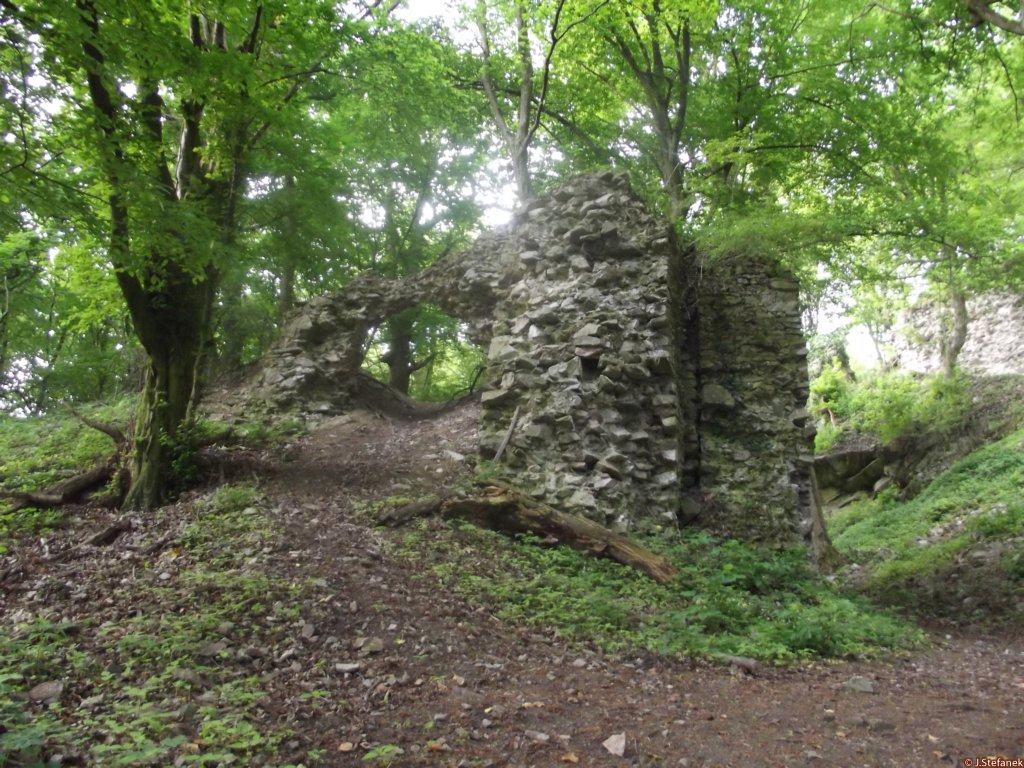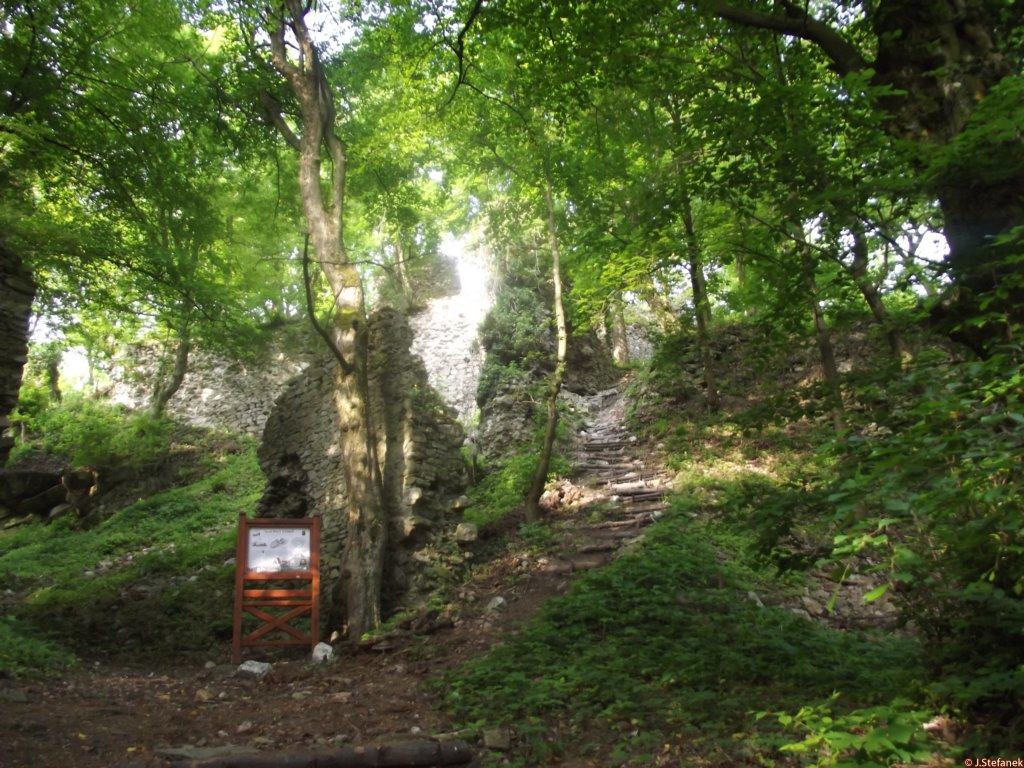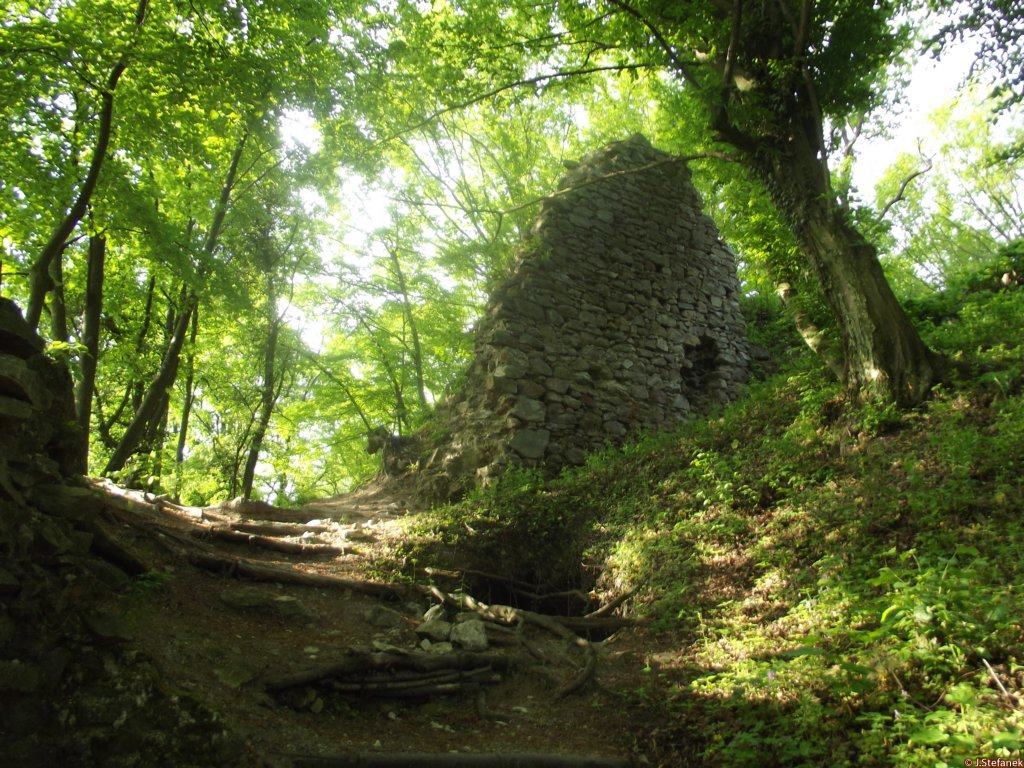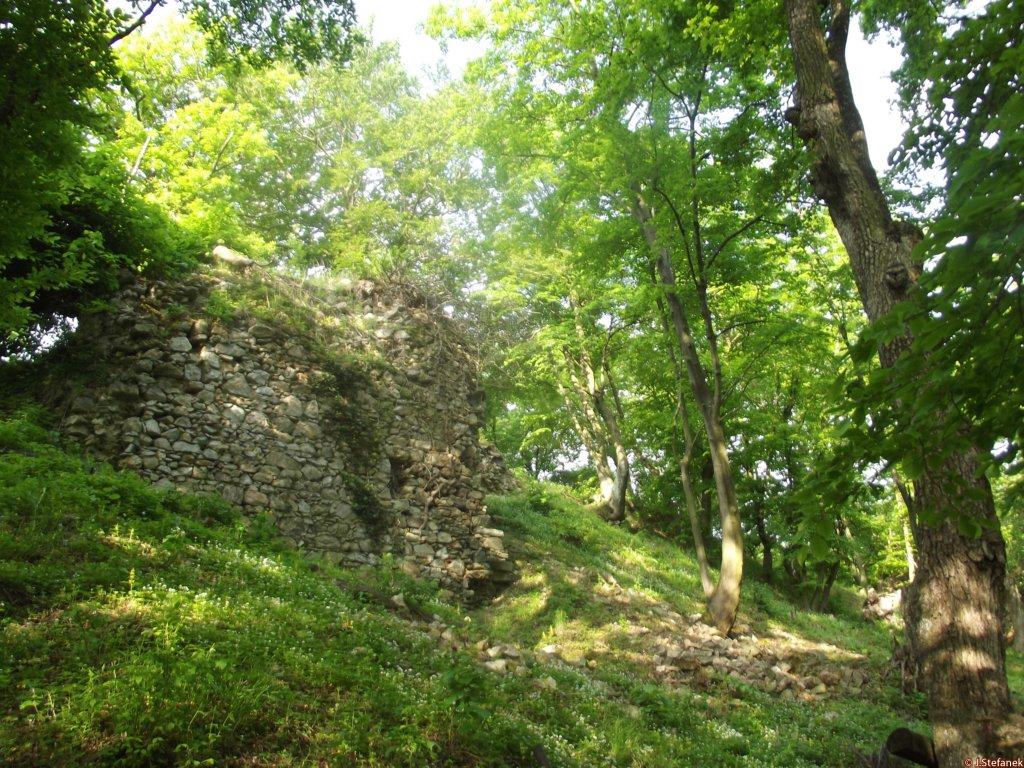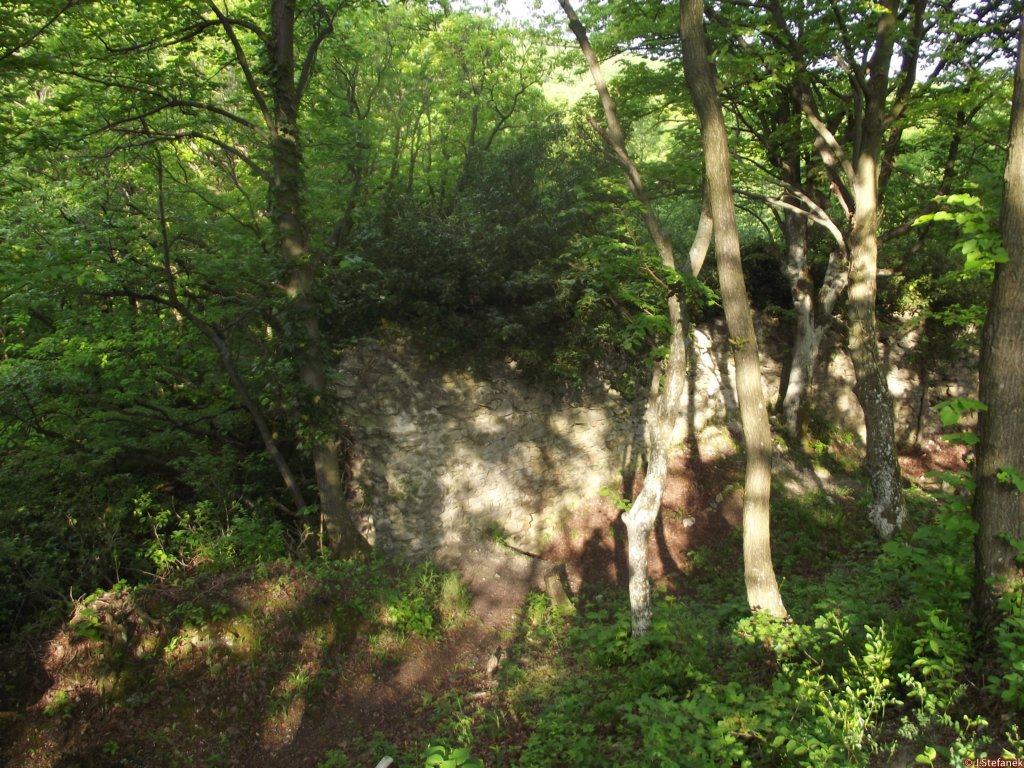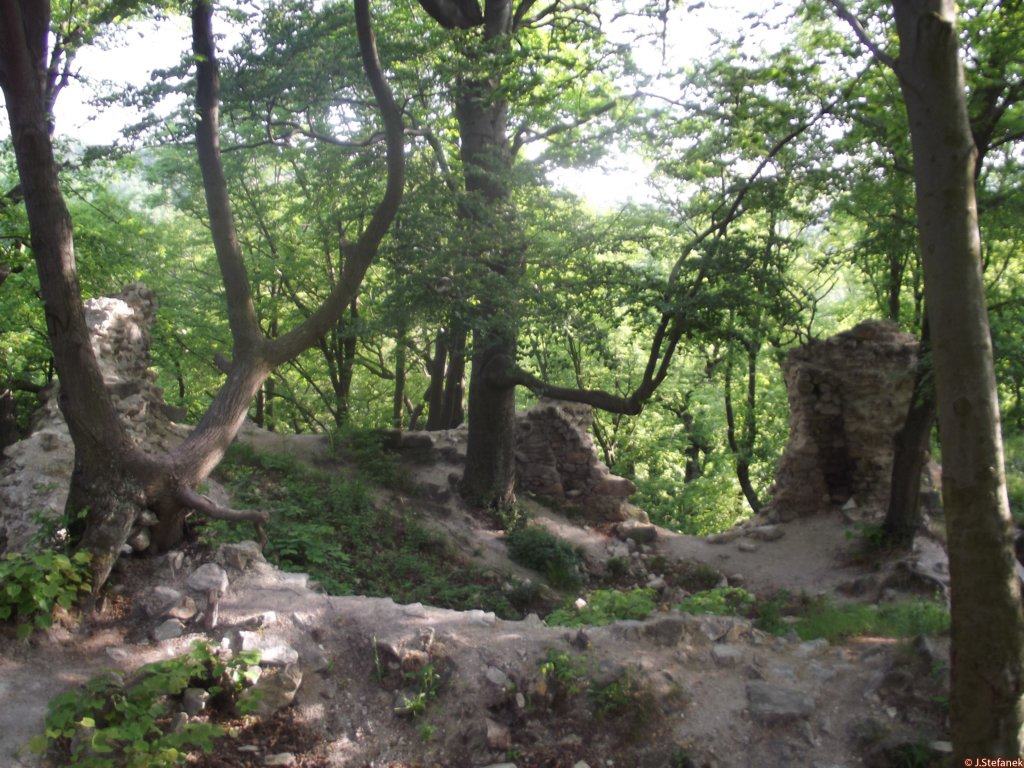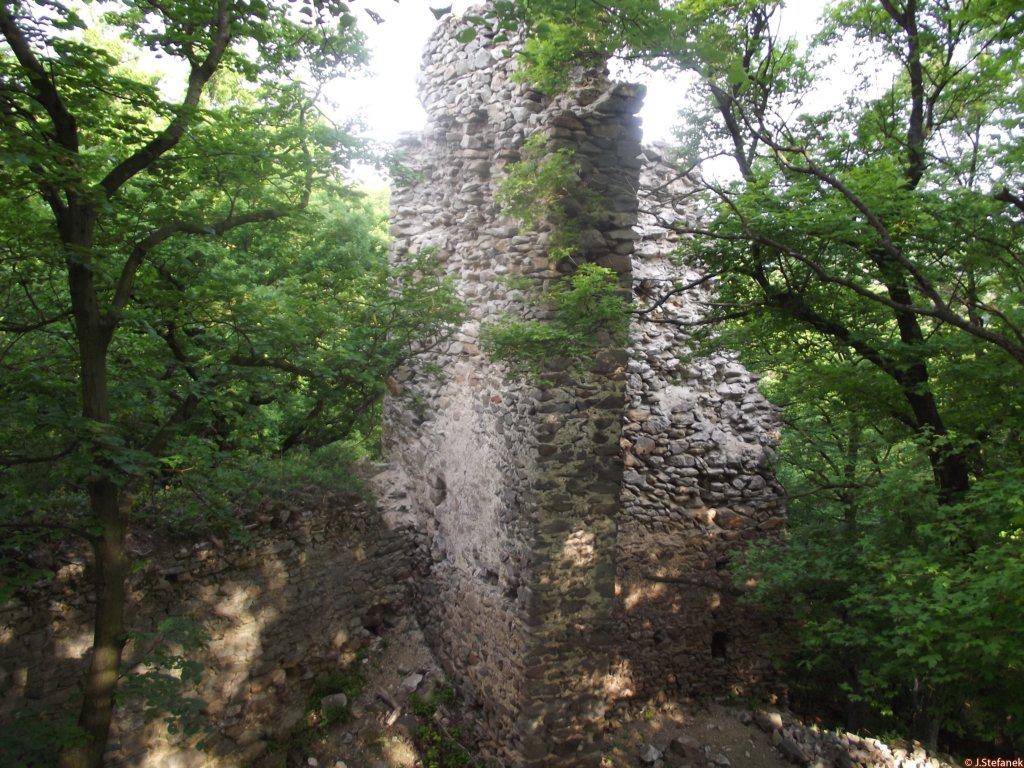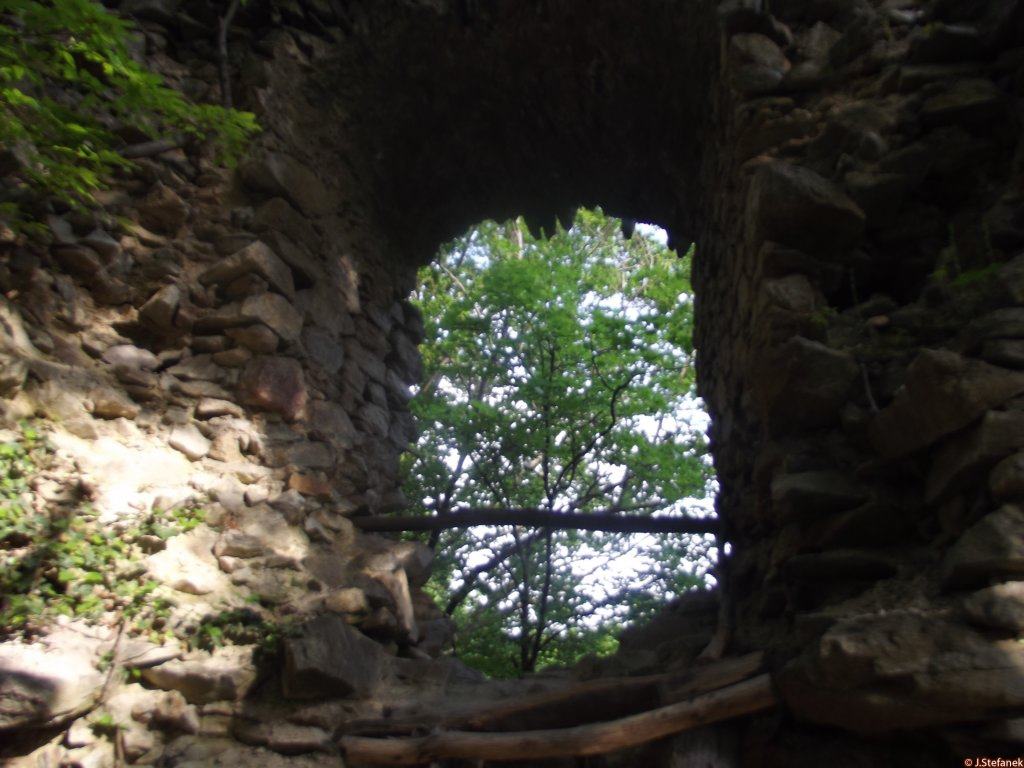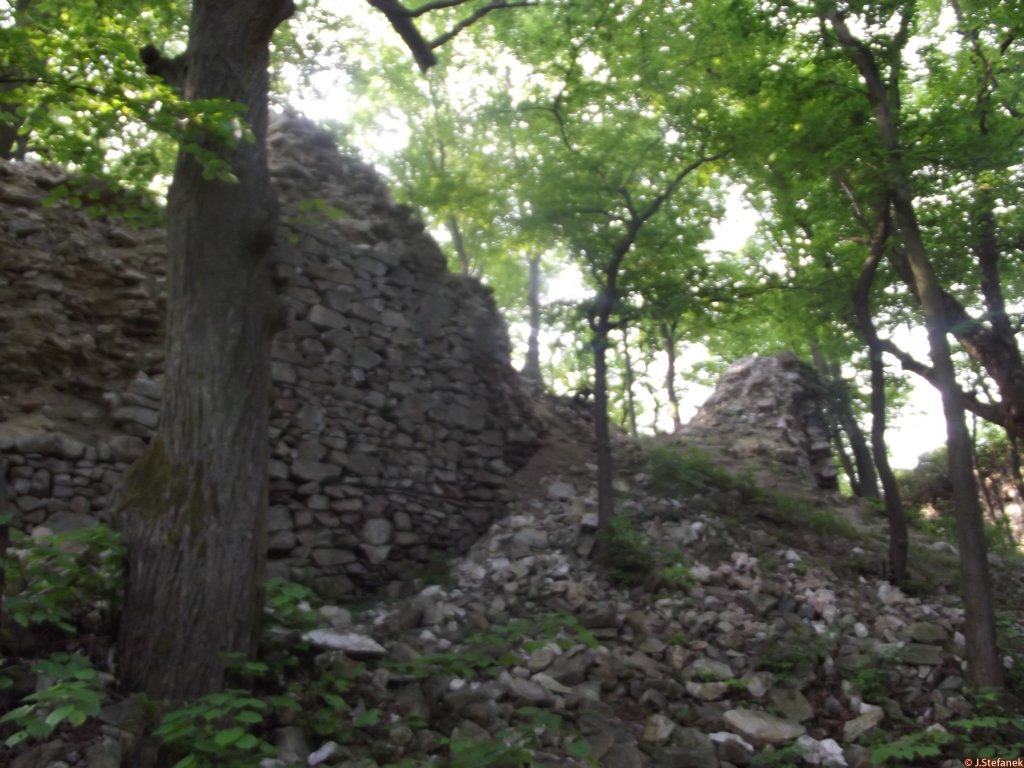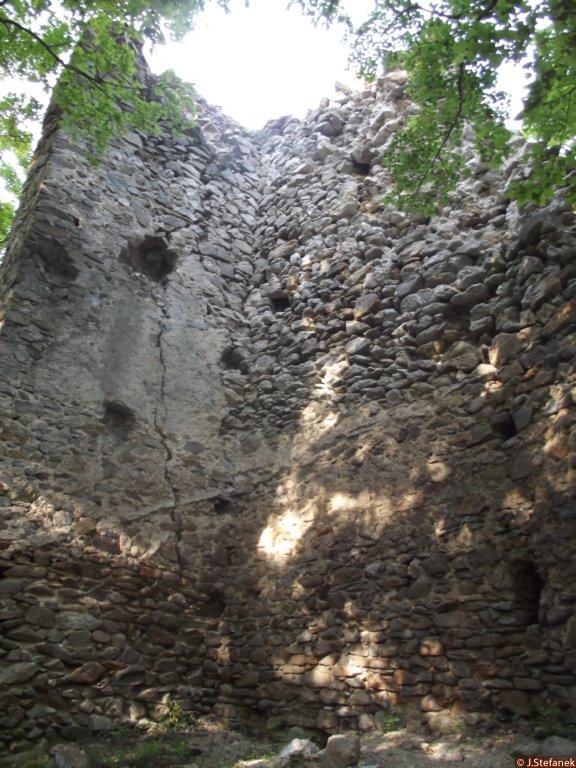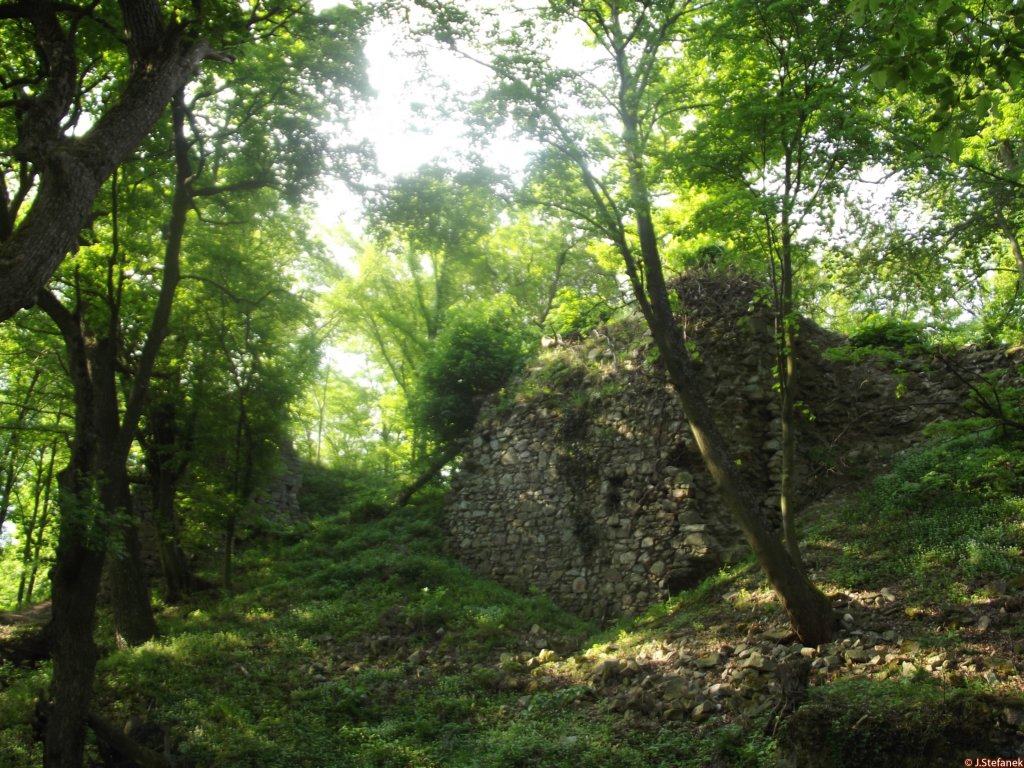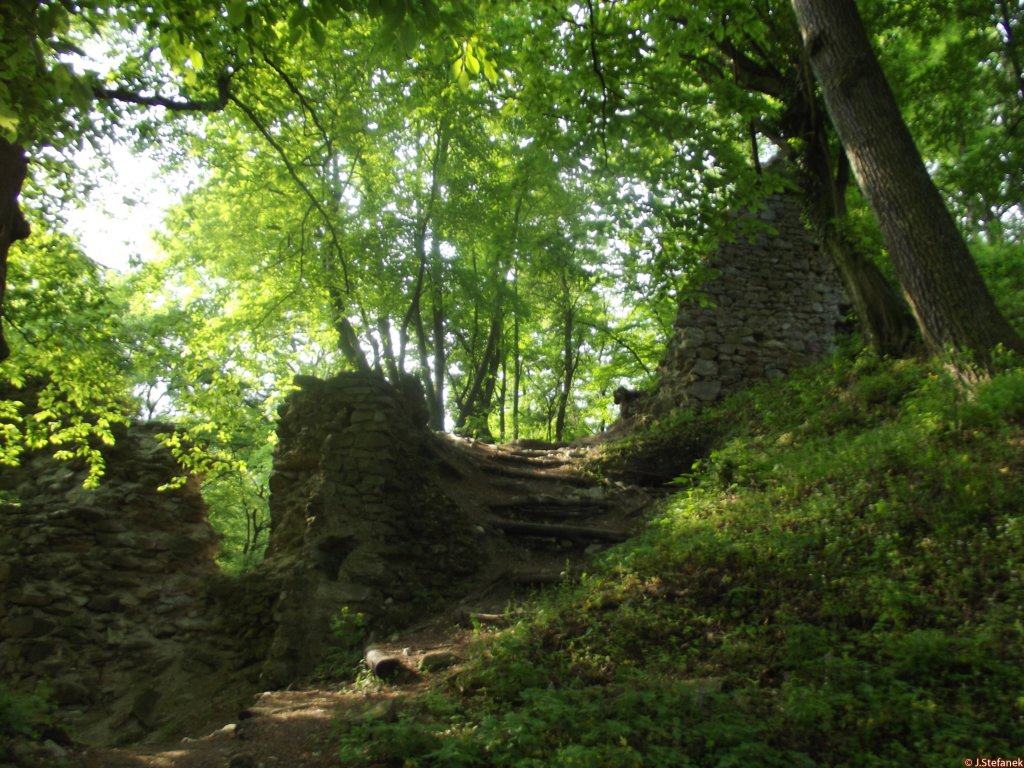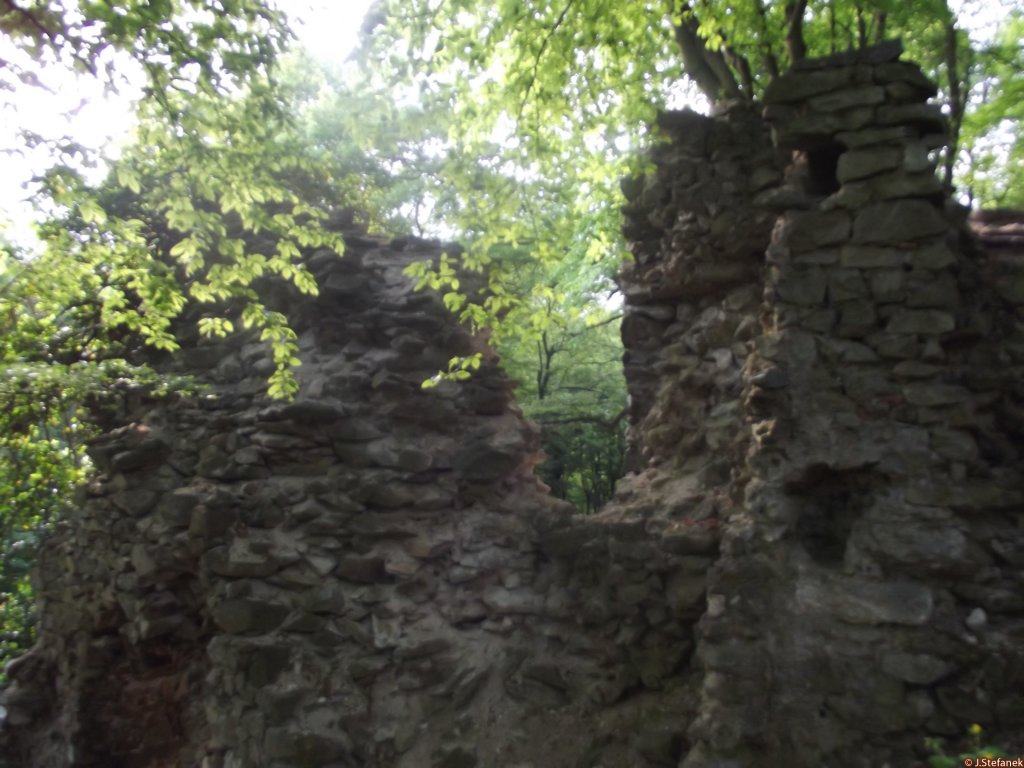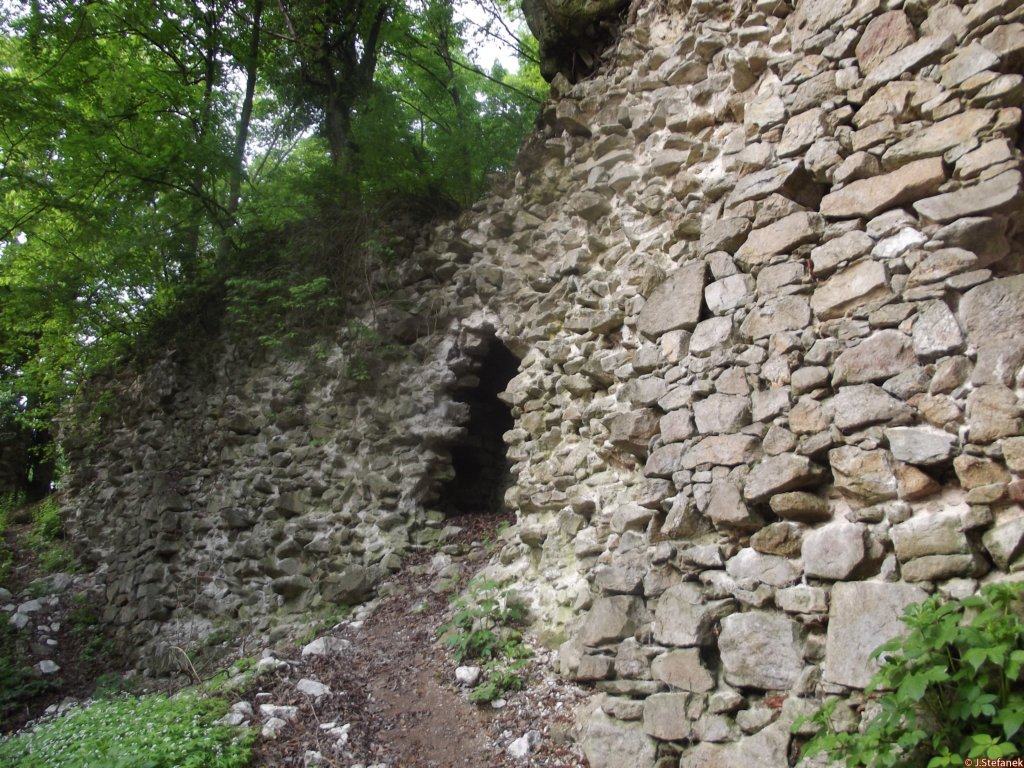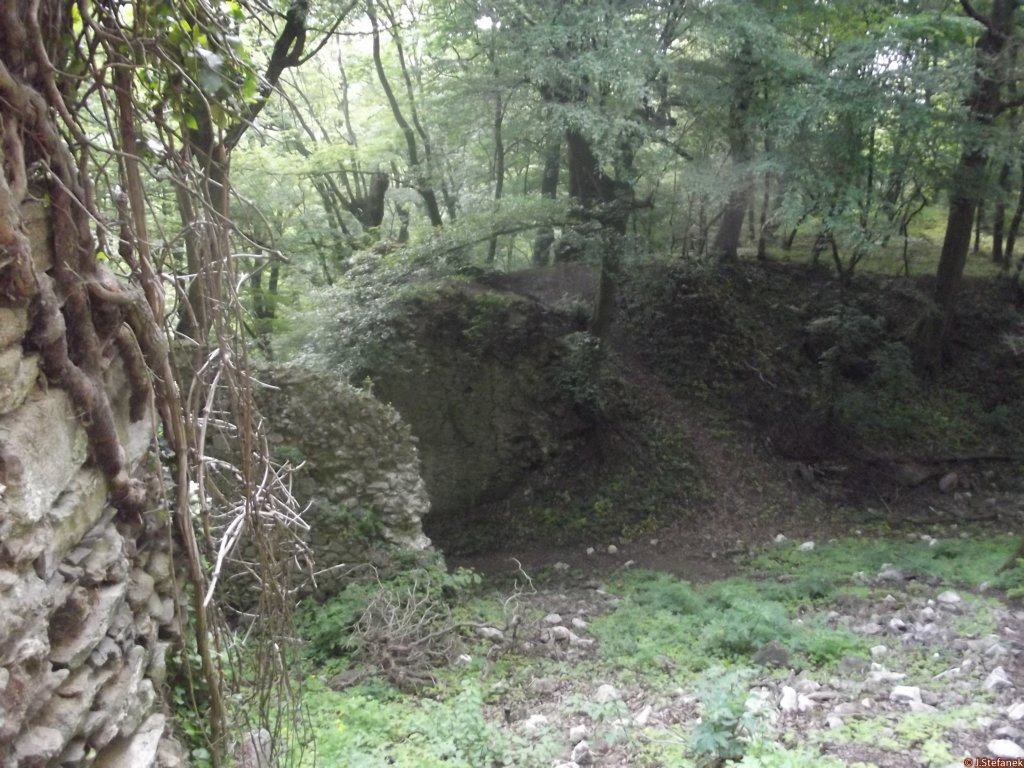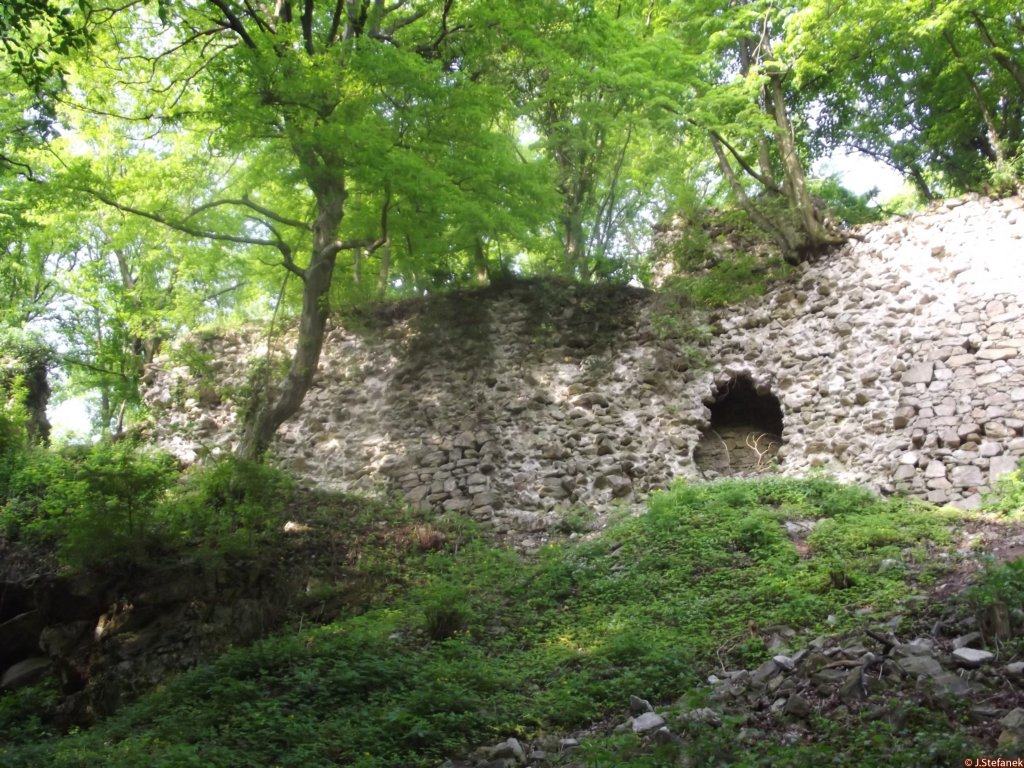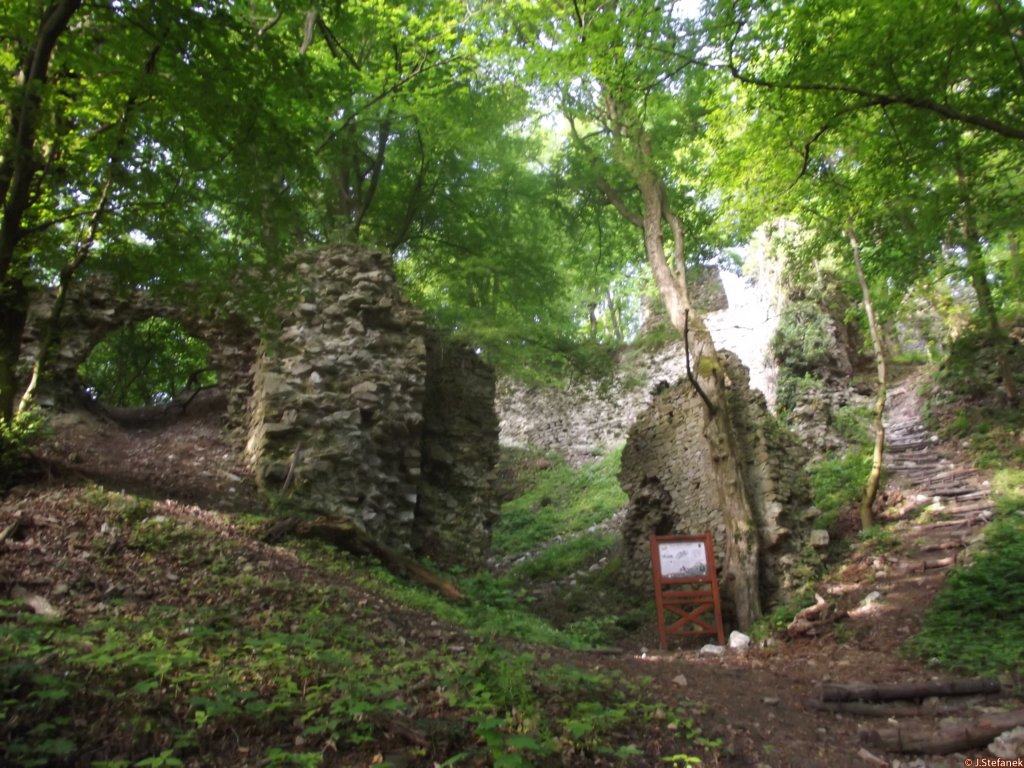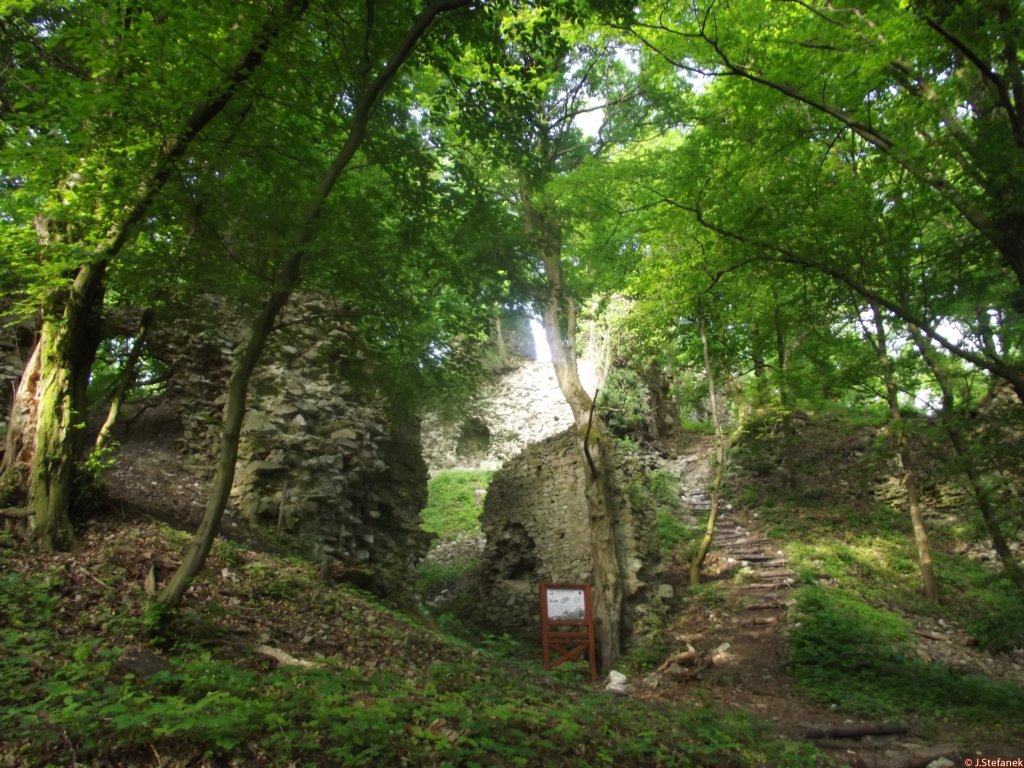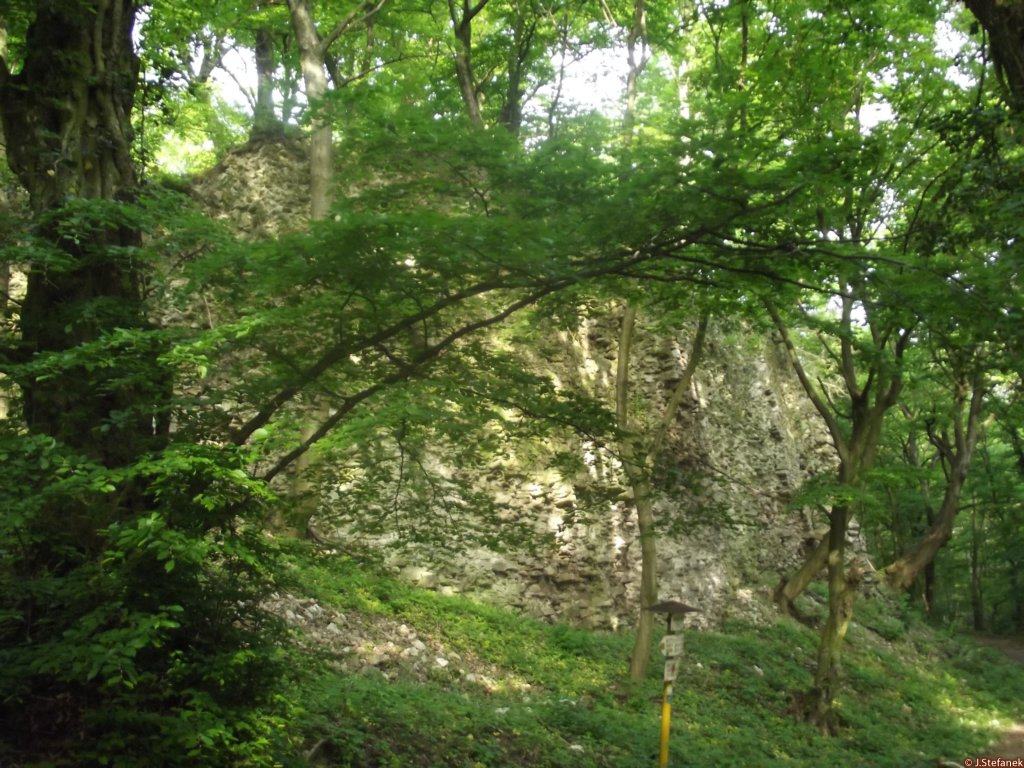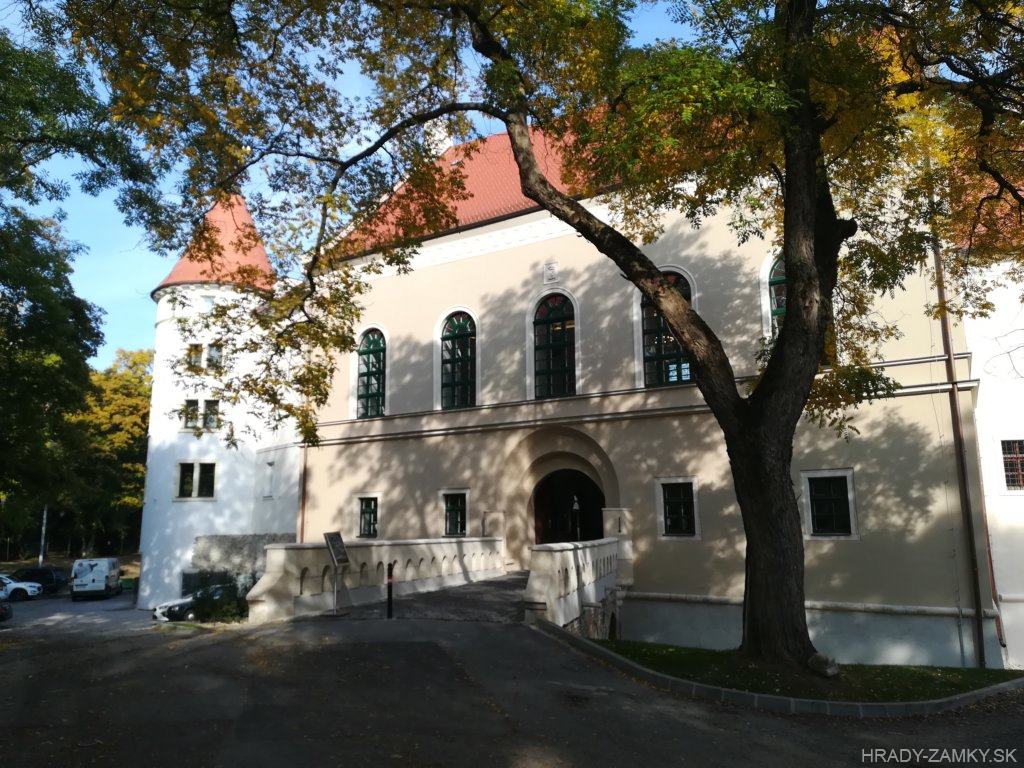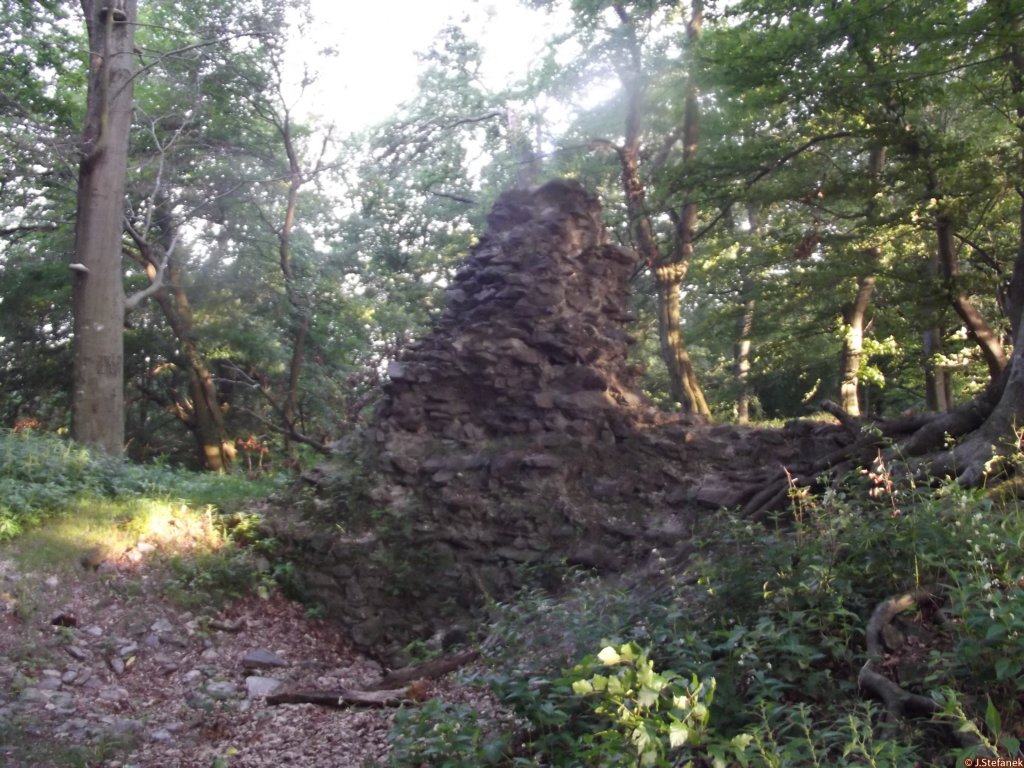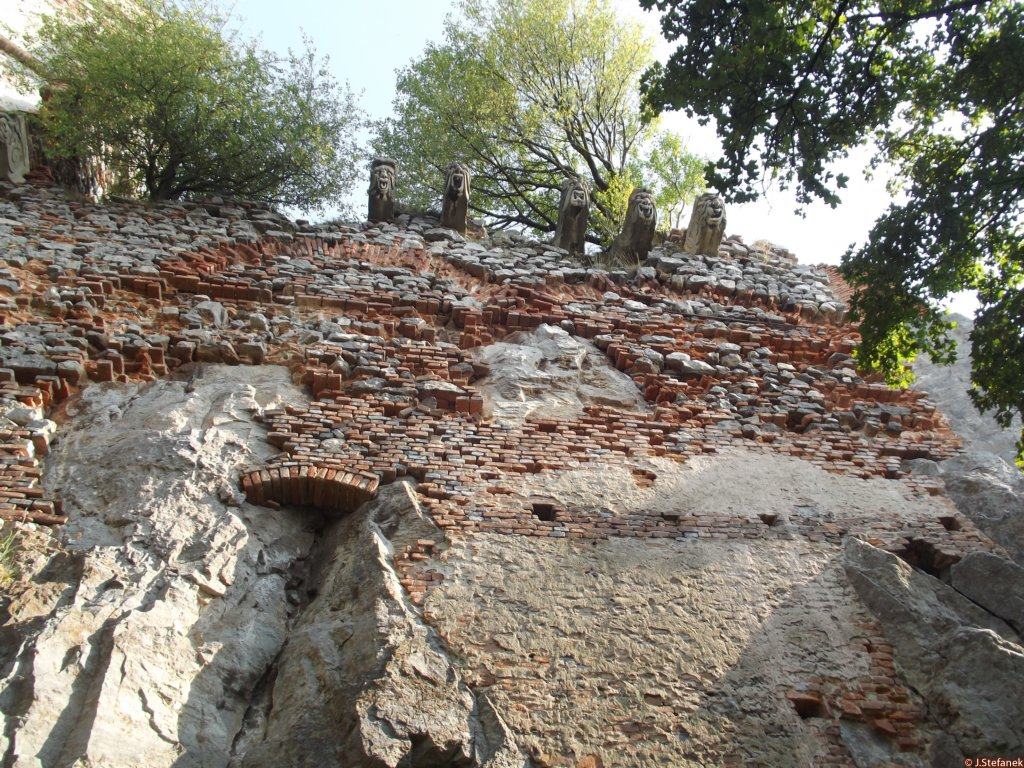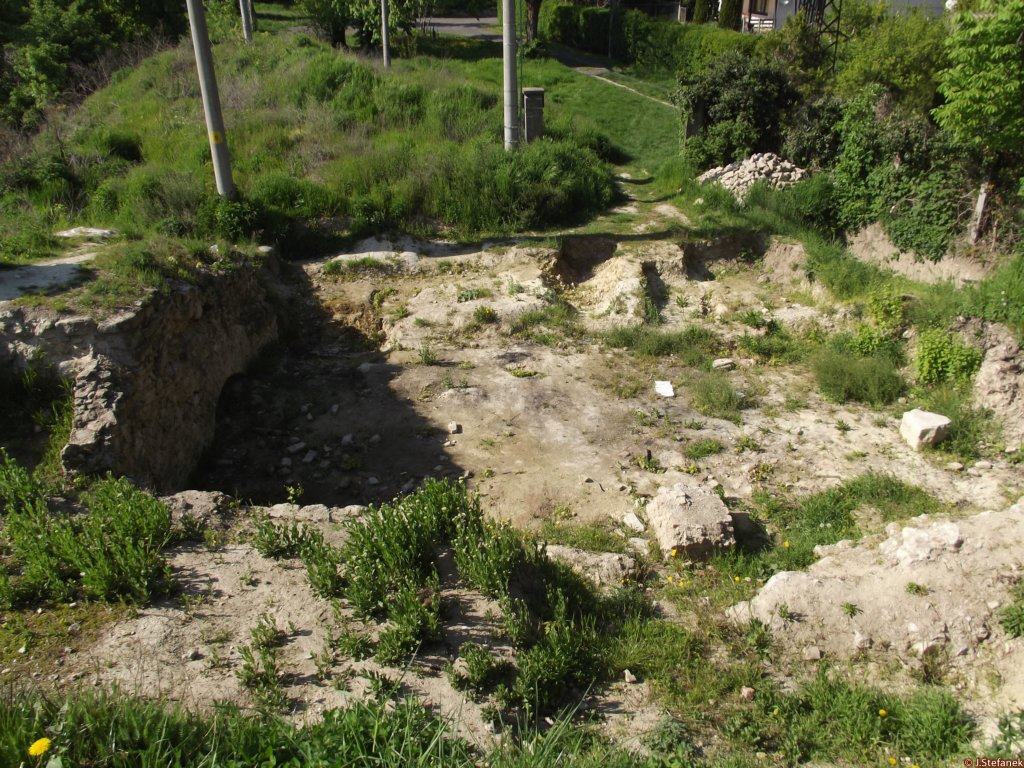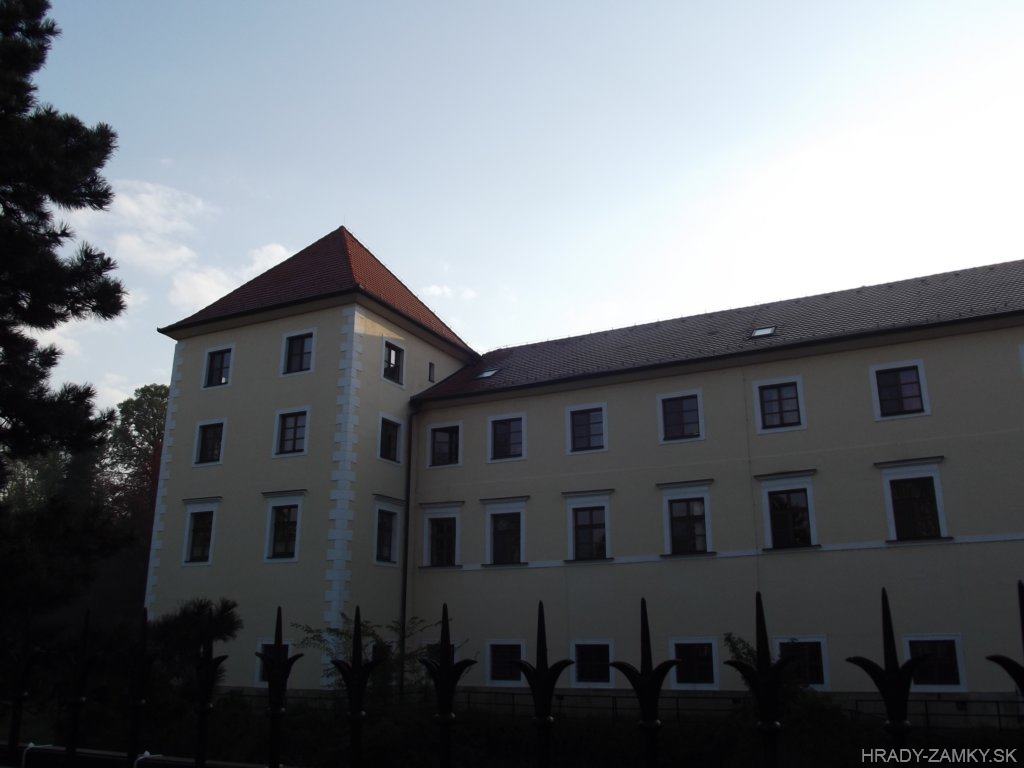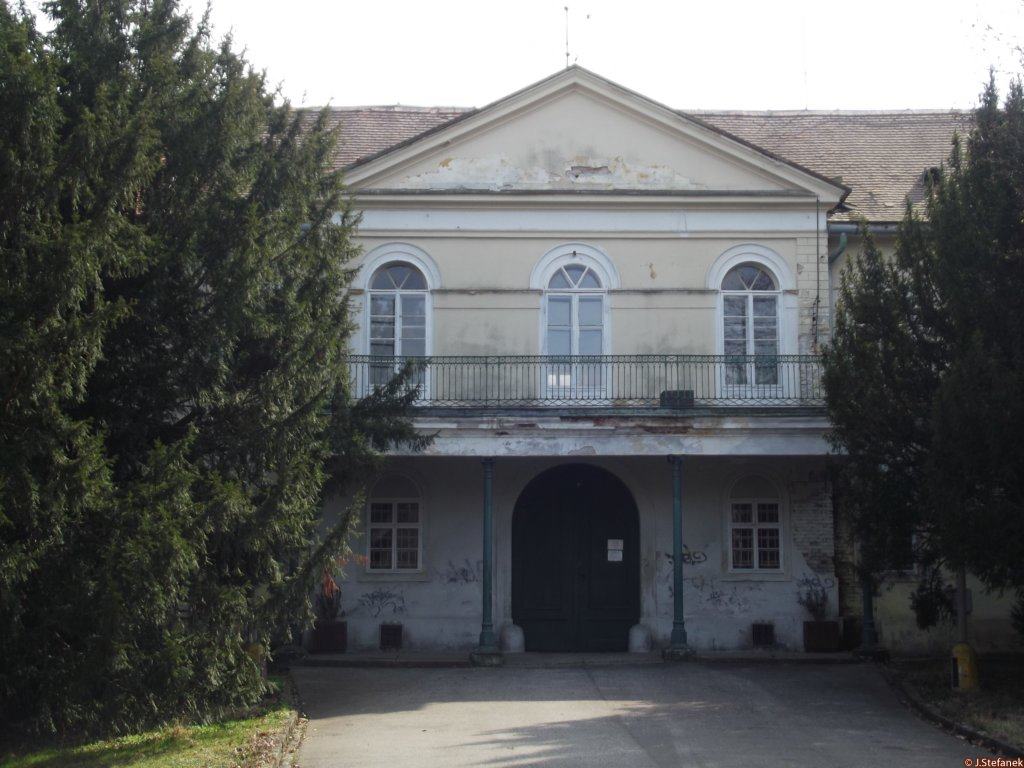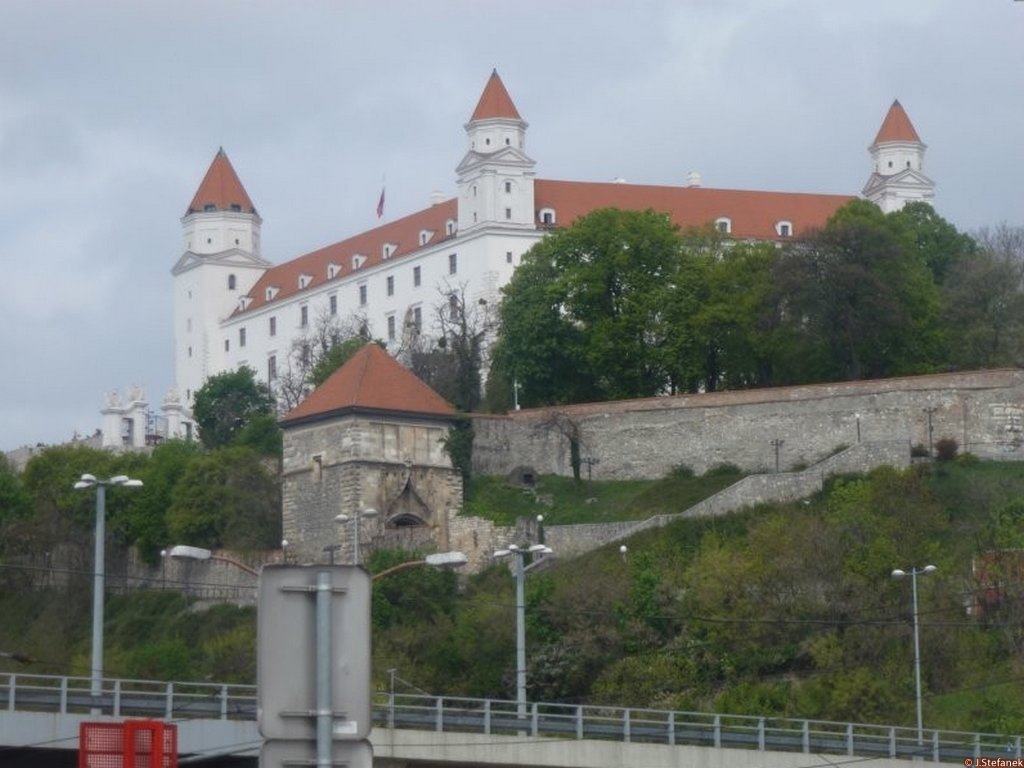Biely Kameň
Svätý Jur Bratislava county Slovakia
castle ruin
Biely Kameň
Svätý Jur Bratislavský kraj Slovakia
zrúcanina hradu
The ruins of a gothic castle on the wooded rocky hill of the Little Carpathians, situated above the local part of the town of Svätý Jur, called Neštich
Zrúcanina gotického hradu na zalesnenom skalnom návrší Malých Karpát, situovaná nad miestnou časťou mestečka Svätý Jur, zvanom Neštich.
Previous names
Jurský hrad, Neštyšský hrad, Castrum de sancto Georgio
Roads
The ruins of Biely Kameň are located in the forest above the town of Svätý Jur near Bratislava - Neštich. Whether we come to Svätý Jur from Bratislava (from the part of Rača) or from Pezinok, we get to the town of Svätý Jur along the main road, which is already called the Krajinská Road directly in the town. From the main road at the traffic light, we turn onto Prostredná Street, after which we always go straight and then across a narrow cobbled one-way road to the roundabout.After the roundabout, we continue straight across Horné Predmestie to a street called Podhradie. On the left side we pass the parking lot. We can park here, but if we want to shorten the path, we continue straight on until we come to a narrow, lower-quality path built by houses. We do not get out of the way until on the left side, just in front of the inn, we see an inconspicuous asphalt turn to the left, where there is also a wooden cross. Somewhere before this turn, along the road, or even lower in the village, we can park the car. We continue on foot, the path along the cross (yellow TZT) through the forest will lead us to the ruins.
Zrúcanina hradu Biely Kameň sa nachádza v lese nad mestskou časťou Svätého Jura pri Bratislave - Neštich. Či už prichádzame do Svätého Jura z Bratislavy (z mestskej časti Rača), alebo z Pezinka, dostaneme sa do mestečka Svätý Jur po hlavnej ceste, ktorá sa už priamo v meste nazýva Krajinská cesta. Z hlavnej cesty na svetelnej križovatke odbočíme na ulicu Prostredná, po ktorej pôjdeme neustále rovno a potom cez úzku dláždenú jednosmernú cestu až ku kruhovému objazdu.Po kruhovom objazde pokračujeme stále rovno cez Horné Predmestie až na ulicu zvanú Podhradie. Na ľavej strane minieme parkovisko. Tu môžeme zaparkovať, ale ak si chceme skrátiť cestu, pokračujeme stále rovno, až prídeme na úzku, menej kvalitnú cestu obstavanú domami. Neschádzame z cesty, až kým na ľavej strane, kúsok pred hostincom, neuvidíme nenápadnú asfaltovú odbočku vľavo, kde sa nachádza aj drevený kríž. Niekde pred touto odbočkou popri ceste, prípadne ešte nižšie v obci, môžeme odstaviť auto. Ďalej už pokračujeme peši, cesta popri kríži (žltá TZT) nás cez les dovedie k zrúcanine.
Description
The walls are now in ruins and the stones were also undoubtedly used as construction material in a wide area. The relief of intricately arranged ramparts and ditches, remains and fragments of the masonry of the five-sided castle core and the ring of the outer walled corral were well preserved. The upper castle was characterized by a consistent peripheral development, after which only significant ridges remained. The inner castle, protected by fortifications of irregular oval shape, had only one gate on the northeast side, above which was a bastion, popularly called "erkel". The access road led along the bridge over the moat.In addition to the tower with a gate, there were two other towers in the outdoor area. Around the outer wall, on its inside were farm buildings, of which only the baker is mentioned. The upper castle and the entire lower part had a number of chambers, which indicate that the castle had to wave considerable supplies. Of these buildings, only the remains in the form of a cellar or parts of the perimeter walls are now preserved above the terrain. The castle has been preserved in a state of advanced disintegration, which does not allow to get more detailed information about its original form and development.
Múry sú dnes v ruinách a hrad tiež nepochybne rozoberali na sekundárne použitie materiálu na stavbách v širokom okolí. Dobre sa zachoval reliéf zložito usporiadaných valov a priekop, zvyšky a fragmenty muriva päťbokého hradného jadra a prstence vonkajšej murovanej ohrady. Horný hrad sa vyznačoval dôslednou obvodovou zástavbou, po ktorej zostali len výrazné vyvýšeniny. Vnútorný hrad chránený opevnením nepravidelného oválneho tvaru mal len jednu bránu na severovýchodnej strane, nad ktorou bola bašta, ľudovo zvaná „erkel“. Prístupová cesta k nej viedla po moste ponad priekopu.Okrem veže s bránou boli vo vonkajšom areáli ďalšie dve veže. Okolo vonkajšieho múru, z jeho vnútornej strany boli hospodárske budovy, z ktorých sa spomína iba budova pekára. Horný hrad i celá spodná časť mali celý rad komôr, ktoré svedčia o tom, že hrad musel mávať značné zásoby. Z týchto budov sú dnes zachované len zvyšky v podobe pivnice alebo častí obvodových múrov miestami vystupujúcich nad terén. Hrad sa do súčasnosti zachoval v stave pokročilého rozpadu, ktorý neumožňuje získať bližšie informácie o jeho pôvodnej podobe a vývoji.
Plan
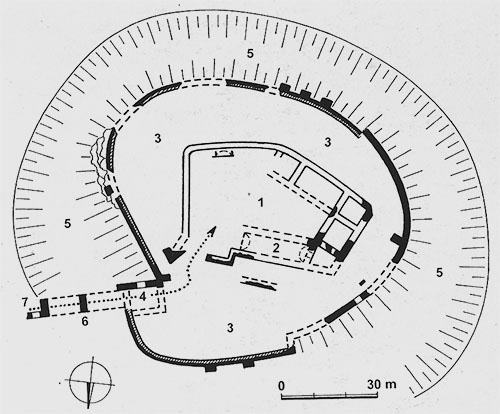
Legend to the ground plan
- 1 - upper castle
- 2 - basement vaulted space
- 3 - lower castle
- 4 - entrance tower
- 5 - moat
- 6 - bridge pillar
- 7 - advanced guardhouse
Legenda k pôdorysu
- 1 - horný hrad
- 2 - suterénny klenutý priestor
- 3 - dolný hrad
- 4 - vstupná veža
- 5 - priekopa
- 6 - pilier mosta
- 7 - predsunutá strážnica
History
Biely Kameň Castle above Svätý Jur as a fortified seat replaced the older fortified settlement situated on the opposite side of the valley. This fortified settlement was established in the 9th century and continued to function in the following period. In 1209, the territory of Svätý Jur was acquired by the Hont-Pázmány family, who chose the original fortress above the Neštich fort as their seat. The stone castle was built by the counts of Svätý Jur and Pezinok after 1241, shortly after the Tatar looting, when Belo IV. order to build stone castles. The newly built castle is first mentioned in 1271 in connection with the raids of the Czech king Přemysl Otakar II. to the Hungarian border, and then in 1295. After the death of Count Juraj Svätojurský, the castle was confiscated in favor of the king. The rebel's sons, Sigismund, Christopher and Peter, reconciled with the king, who gave it to Peter for his services. Peter died in 1516. The castle belonged to the Svätojurský family until the extinction of the family in 1543, when the last male member of the family - Krištof - died. The castle then changed owners several times.
Until 1550, the castle was the property of Gašpar Serédy, who died that year. In 1566, the castle became the property of Count Menberg, the mayor of Bratislava. After him, Count Mikuláš Eck of Salmi received him in the royal donation, who also gave him and his property as an advance to the Imperial Duke Count Ján Krusith (Krušič), for 132 thousand tolars. After his death, his widow Katarína married Štefan Illésházy. It was at the request of her late husband. In 1598, the patrician of the town of Svätý Jur appeared before Emperor Rudolf II. with a request not to renew the lease of their reserve master Štefan Illésházy. They wanted to pay the amount themselves. The monarch accepted the proposal. Illésházy defended himself, but after falling into the emperor's disfavor and losing all his property, he had to flee to Poland. Biely Kameň Castle, with all its powers, was handed over to the Board of Directors of St. George for use by the Imperial Commission. After Illésházy made a significant contribution to the election of Matthew II as king, the recent exile became the main royal court. His property and the advances of St. George were returned to him. The landowner expelled Juranov from the castle. They didn't resist too much, because the vineyards remained. Finally, the privileged deed of Ferdinand II. from r. 1647 Saint Jur was promoted to a free royal town and thus freed from dependence on the castle. The city had to pay the monarch 400 shackles of good and selected wine a year (1 shackle = 56l, 400 shackles = 22,400 l). However, he had already ruled the castle at that time since 1626 Štefan Pálffy, who took over the property together with the title of count in the eternal ownership of the family. After moving them to the manor house in today's Svätý Jur, the castle gradually lost its function. It was probably destroyed during the Turkish invasion in 1663 and there were no reasons to restore it. It has been a ruin ever since.
Hrad Biely Kameň nad Svätým Jurom vo funkcii opevneného sídla nahradil staršie hradisko situované na opačnej strane údolia. Toto hradisko vzniklo v 9. storočí a svoju funkciu plnilo aj v ďalšom období. V roku 1209 získal územie Svätého Jura rod Hont-Pázmányovcov, ktorý si za svoje sídlo zvolil pôvodnú pevnosť nad hradiskom Neštich. Kamenný hrad postavili grófi zo Svätého Jura a Pezinka po roku 1241, krátko po tatárskom plienení, keď dal Belo IV. rozkaz stavať hrady kamenné. Novopostavený hrad sa prvý raz spomína v roku 1271 v súvislosti s nájazdmi českého kráľa Přemysla Otakara II. do uhorského pohraničia, a potom v roku 1295. Po smrti grófa Juraja Svätojurského bol hrad skonfiškovaný v prospech kráľa. Synovia tohto vzbúrenca, Žigmund, Krištof a Peter, sa s kráľom zmierili a ten ho daroval Petrovi za preukázané služby. Peter zomrel v roku 1516. Hrad patril rodu Svätojurskému až do vymretia rodu v roku 1543, keď umrel posledný mužský člen rodu - Krištof. Hrad potom viackrát menil majiteľa.
Do roku 1550 bol hrad majetkom Gašpara Serédyho, ktorý v tomto roku zomrel. V roku 1566 sa stal hrad majetkom grófa Menberga, bratislavského župana. Po ňom ho do kráľovskej donácie dostal gróf Mikuláš Eck zo Salmi, ktorý ho aj s jeho majetkami dal do zálohu cisárskemu vojvodcovi grófovi Jánovi Krusithovi (Krušič), za 132 tisíc toliarov. Po jeho smrti sa jeho vdova Katarína vydala za Štefana Illésházyho. Bolo to na prianie jej zomrelého manžela. V roku 1598 patriciát mestečka Svätý Jur predstúpil pred cisára Rudolfa II. s prosbou, aby ich záložnému pánovi Štefanovi Illésházymu prenájom viac neobnovoval. Príslušnú sumu chceli vyplatiť sami. Panovník návrh prijal. Illésházy sa bránil, ale po tom ako upadol do cisárovej nemilosti a stratil všetok majetok, musel utiecť do Poľska. Hrad Biely Kameň bol so všetkými príslušnosťami odovzdaný cisárskou komisiou do užívania predstavenstvu Svätého Jura. Po tom ako Illésházy výrazne prispel k tomu aby bol za kráľa zvolený Matej II., sa z nedávneho exulanta stal hlavný kráľovský dvoran. Boli mu vrátené majetky a takisto záloh Svätého Jura. Zemepán Juranov z hradu vyhnal. Ani sa veľmi nebránili, lebo vinice im zostali. Nakoniec výsadnou listinou Ferdinand II. z r. 1647 Svätý Jur povýšil na slobodné kráľovské mesto a tým aj zbavil závislosti od hradu. Mesto muselo ročne panovníkovi platiť 400 okov dobrého a vyberaného vína (1 okov = 56l, 400 okov = 22 400l). Na hrade ale už v tom čase panoval od r. 1626 Štefan Pálffy, ktorý majetok spolu s titulom grófa prevzal do večného vlastníctva rodu. Po ich presťahovaní do kaštieľa v dnešnom Svätom Jure, hrad postupne strácal svoju funkciu. Pravdepodobne bol zničený pri tureckom nájazde v roku 1663 a na jeho obnovu už neboli dôvody. Odvtedy je ruinou.
Myths and legends
There are no myths available.
Povráva sa...
Hrad sa podarilo dostavať až vtedy, keď tajomný pútnik zastokol do zeme suchý prút a halúzka do večera vypučala. Kým drevina dužnela, hrad prekvital. Potom panstvo spyšnelo, strom vyschol a Biely Kameň sa rozpadol na zrúcaninu.
Povesť o Tureckej studničke
17. septembra 1663. Hoci sa na opevnení mesta usilovne pracovalo, hradby stále neboli dokončené a turecké nebezpečenstvo bolo príliš blízko. Pohroma prišla nadránom, bleskovo. Obyvatelia sa neubránili. Po strechách skákal červený kohút, lúpilo sa, zabíjalo, bralo do zajatia. Kto nevládal, snažil sa skryť, kto vládal, utekal. Kto dôveroval mladým nohám, rozbehol sa smerom do viníc. Tam utekala i mladučká dievčina zo Segnerovie rodiny. Dych sa krátil, srdce v hrdle, dupot konských kopýt už kdesi za chrbátom. Kde hľadať pomoc, kde záchranu? Zrak jej padol na nie priveľmi hlbokú studienku pod vinohradom. Skok do vody, prikrčila sa a čakala na zázrak. Vtom, kde sa vzal, tu sa vzal, veľký pavúk križiak sa pustil do roboty. V okamihu utkal sieť a uvelebil sa v jej strede. Turci, vidiac sieť neporušenú, prebehli naokolo. Dievča bolo zachránené. Keď sa Svätojurania spamätali z najhoršieho, keď porátali mŕtvych, zajatých a všetky straty, rozprávali si aj o tomto zázračnom zachránení. Studničku pomenovali Turecká. Andeas Segner, brat zachráneného dievčaťa, nechal z bieleho pieskovca vytesať hlavu Turka a platňu osadiť na studničku. V studničke bývala dobrá studená voda. Studnička zanikla, povesť zostala a dedila sa z pokolenia na pokolenie.Po rekultivácii v roku 1967 pamätný kameň zo studničky objavili a teraz je vystavený v mestskom múzeu
Useful information
The ruins are freely accessible
Zrúcanina je verejnosti voľne prístupná
Nearby castles

